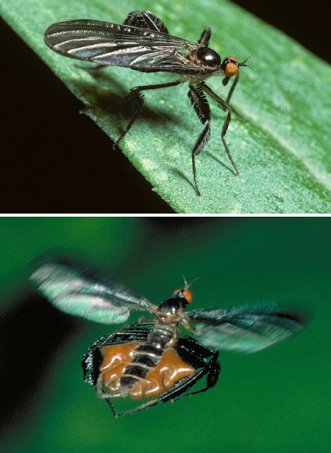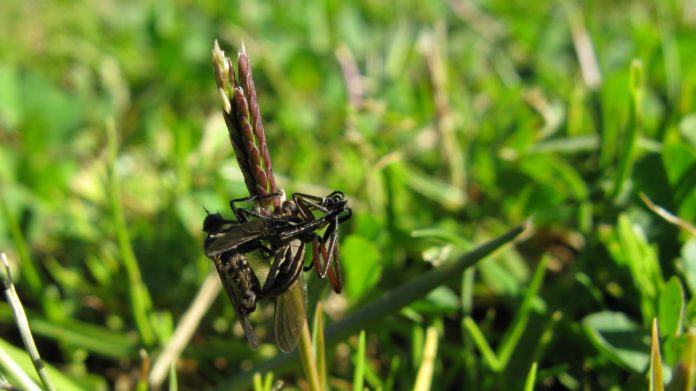Get your sacs-y on: researchers have discovered that large sacs and hairy legs are what guys are into – that is, if you’re a female dance fly.
Dance flies derive their name from their aerial mating swarms, which look like a mid-air dance. Uncommon for the natural world, it’s the female of the species who puts on a show to attract a mate.
The illusion of a bigger body fools potential mates
Canadian lead author Rosalind Murray and colleagues studied the lengths that the females go to secure a mate by examining these two sexual ornaments (both are common across North American dance fly species).
When females enter a mating swarm, they puff up their sacs to create the illusion of a bigger body. The team believes this may be an evolutionary adaptation for those with smaller sacs who need to compete with those with naturally big sacs.

The idea is that appearing bigger implies a bountiful store of eggs, making them ideal mating partners.
Similarly, the legs are flanked parallel to the abdomen, and the pinnate scales – which look like hairs – further give the impression of a larger body.
“Females look like little helicopters, flocking together within the swarm,” says Murray. “The males assess the females, then they pair off, and basically fall out of the sky.”
The team’s findings showed that the females with bigger sacs were three times more attractive than the average. However, for females stuck with smaller sacs, they can still attract a mate if they have well developed pinnate scales – either way, hairier is always better.
They note that the inflatable sacs may be a relatively new evolutionary development because fewer species of dance fly possess this technique and it has such a potent effect on the males.
Twist turns mate-choice models ‘on their head’
Courting females are rare, especially scenarios where so much effort is put in.
Typically, this role falls to the male of the species where extravagance knows few bounds. For example, the BBC’s Planet Earth’s series, where you can see the bizarre and hilarious mating rituals of birds of paradise.
Females usually save their energy for producing eggs and the work of rearing their young, so it’s a tough life for female dance flies who have extra duties.
Still, there may be some sneaky respite. The researchers also suspect that, since the females often mate repeatedly, it’s possible they re-enter mating swarms to trick male suitors into handing over supplies under the pretence of mate selection – all the males come bearing gifts of food.
“The suggestion that females are using dishonest signals to attract males turns many mate-choice models on their head,” commented UBC’s Devin Arbuthnott.









































